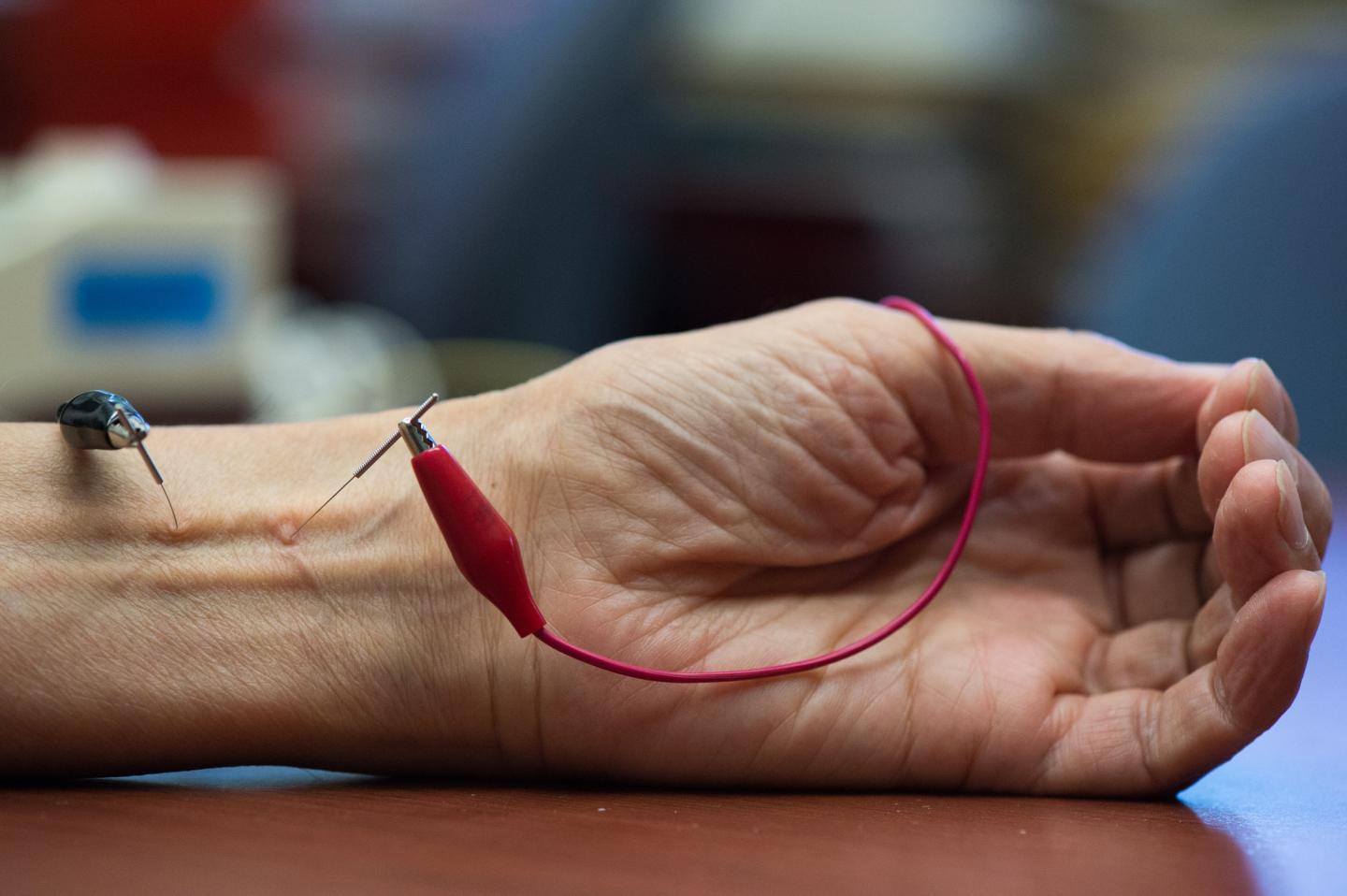Electroacupuncture lowers hypertension by activating natural opioids
November 1, 2016

UCI study shows that repetitive electroacupuncture evokes a long-lasting action in lowering blood pressure in hypertension. (credit: Chris Nugent/UCI)
A study led by researchers at UC Irvine’s Susan Samueli Center for Integrative Medicine suggests electroacupuncture can effectively reduce hypertension in rats.
The team led by cardiology researcher Zhi-Ling Guo published evidence in Nature’s Scientific Reports (open access) to show how electroacupuncture remediates high blood pressure “by increasing the gene expression of enkephalin, one of three major opioid peptides produced by the body.”
The new study* builds on earlier reported research at the Samueli Center that tracked the efficacy of electroacupuncture to lower hypertension in humans. Patients stimulated at specific locations in the wrist had drops in their overall blood pressure scores.
The potential advantages of electroacupuncture over conventional medical therapy include few (if any) side effects, according to the researchers.
The study was supported by National Institutes of Health grants.
* In tests on rats subjected to cold exposure, UC Irvine School of Medicine cardiology researcher Zhi-Ling Guo and colleagues noted that blood pressure reductions lasted for at least three days after electroacupuncture (2 Hz, 0.1 – 0.4 mA, 0.5 ms duration) for 30 minutes twice weekly for five weeks by increasing the gene expression of enkephalin. With the onset of winter in the northern hemisphere, hospitals and clinicians typically see an uptick in deaths from stroke and heart attack associated with high blood pressure, according to a study by Canadian scientists published in Nature Scientific Reports.
Abstract of Repetitive Electroacupuncture Attenuates Cold-Induced Hypertension through Enkephalin in the Rostral Ventral Lateral Medulla
Acupuncture lowers blood pressure (BP) in hypertension, but mechanisms underlying its action are unclear. To simulate clinical studies, we performed electroacupuncture (EA) in unanesthetized rats with cold-induced hypertension (CIH) induced by six weeks of cold exposure (6 °C). EA (0.1 – 0.4 mA, 2 Hz) was applied at ST36-37 acupoints overlying the deep peroneal nerve for 30 min twice weekly for five weeks while sham-EA was conducted with the same procedures as EA except for no electrical stimulation. Elevated BP was reduced after six sessions of EA treatment and remained low 72 hrs after EA in 18 CIH rats, but not in sham-EA (n = 12) and untreated (n = 6) CIH ones. The mRNA level of preproenkephalin in the rostral ventrolateral medulla (rVLM) 72 hr after EA was increased (n = 9), compared to the sham-EA (n = 6), untreated CIH rats (n = 6) and normotensive control animals (n = 6). Microinjection of ICI 174,864, a δ-opioid receptor antagonist, into the rVLM of EA-treated CIH rats partially reversed EA’s effect on elevated BP (n = 4). Stimulation of rVLM of CIH rats treated with sham-EA using a δ-opioid agonist, DADLE, decreased BP (n = 6). These data suggest that increased enkephalin in the rVLM induced by repetitive EA contributes to BP lowering action of EA.